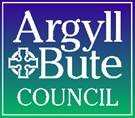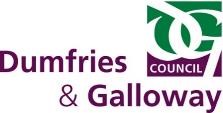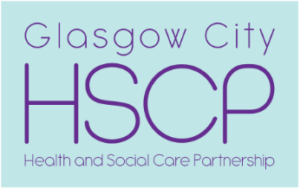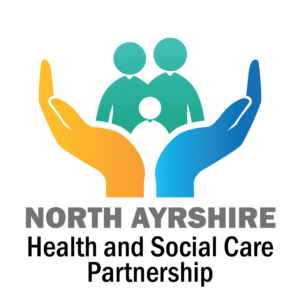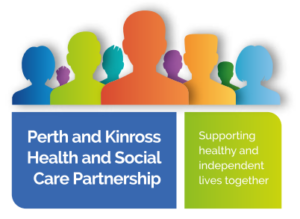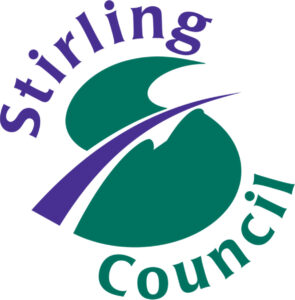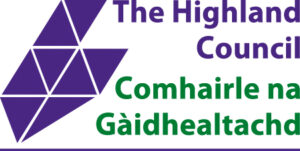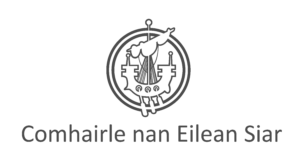Submission from Social Work Scotland to Scottish Government
Social Work Scotland is the professional body for social work leaders, working closely with our partners to shape policy and practice, and improve the quality and experience of social services. We welcome this opportunity to comment on proposals to raise the age of referral to the Principal Reporter and make clear our strong support for this development.
Do you agree that the maximum age of referral to the Reporter should be increased to 18?
Yes. We agree that, with some important caveats, the maximum age of referral should be increased to 18, for all grounds.
The proposal presents some clear benefits, including.
- Alignment of key child welfare and wellbeing systems and processes with the UN Convention on the Rights of the Child (UNCRC), extending protection and support to all children and young people under the age of 18.
- Attuned decision making for 16 and 17-year-olds in need of compulsory supervision, care and protection, taking account of the evolving maturity of each young person in the context of their relationships and circumstances.
- Progress realisation of the Getting it right for every child practise model, clarifying the national framework for inter-agency assessment and planning for children and young people, which in turn will facilitate greater consistency of practice locally.
- Encourage the development or adoption of approaches to support the needs of children and young people, in contrast to criminal justice processes which often engender feelings of isolation, alienation and stigma.
- Congruence with legislation already in force in Scotland, which define a person to be a child up to the age of 18. However, there will remain a need for wider legal review, addressing the body of relevant law which describes adults as individuals over the age of 16. Of particular relevance for social work is the overlap with Adult Support and Protection legislation.
- Greater flexibility in the review of plans, support and progress in respect of 16 and 17-year-olds subject to Compulsory Supervision Orders (CSO).
- Help improve transitions from children to adult services, clarifying and reinforcing the responsibilities of public agencies towards 16 and 17-year-olds, as well as further eroding the idea that 16 or 17 is a suitable age at which children become ‘adults’ and ‘independent’.
- Accord with the intentions in the Promise, helping to ensure that Scotland does more to avoid the criminalisation of children, and deals with them in a way that is responsive, age-appropriate, need (not behaviour) orientated, proportionate and trauma-sensitive. Moreover, the extension of the right of referral increases the chance that 16-17-year-olds will have their ‘cases’ dealt with in an environment that upholds their rights and allows them to effectively participate in proceedings.
However, the proposed change will not, in itself, improve children’s and young people’s experiences, or contribute to improved outcomes. The change will come through implementation, and that must be assiduously planned, effectively led, properly resourced (both in terms of the implementation process itself and the changing profile of demand on services) and underpinned by an infrastructure of facilitative administration (data, evaluation, learning, business management support, etc.) A proposal such as this is only as good as its implementation, and Social Work Scotland is of the strong view that much more attention needs to be paid to implementation in general, and to the implementation plan for this change specifically.
Moreover, in considering this specific proposal, implementation will need to take account of:
- The profound and ongoing impact of Covid-19 on the system’s potential to deliver the increased capacity raising the age of referral is likely to entail. From a pre-Covid capacity of 700+ Hearings a week, the system is now seeking to deliver approximately 200 a week, by means of a blended model that balances the health, wellbeing and rights of all involved. With an increase in poverty and family stress likely over the coming year, social work activity (already at above-trend levels) may lead to increases in care and protection referrals to the Reporter. The system will respond with determination, attempting to absorb and adapt as much as it can. But ultimately more demand must be met by greater investment and expansion of capacity. ‘Raising the age of referral’ could end up being a lowering of the standard of service, if it becomes a doorway through to services which under-resourced and over-stretched before covid-19. That would potentially increase risk, diminish trust in the system, and unsettle victims.
- The net increase in referrals to the Principal Reporter is likely to be swelled further by revisions to Sentencing Guidelines in relation to young people and young adults. The guidelines, when implemented, will affect the number of social work assessments which need to be undertaken, and plans to be implemented. These developments have a system-wide impact. The recent consultation on those guidelines acknowledged that a realignment of resources from adult criminal justice and youth justice services (where they exist) towards children and families services would be needed, but there has not, as yet, been any effort to quantify that or to work out how the process of realignment would be managed. Furthermore, there will be a net combination impact in terms of referral and demand from (a) commencement of the Age of Criminal Responsibility (Scotland) Act 2019; (b) revision of the National Guidance for Child Protection; (c) commencement of the Equal Protection from Assault (Scotland) Act 2019; (e) national rollout of the Scottish Child Interview Model (joint investigative interviewing of children and young people); (f) developments prompted by the expert report on harmful sexual behaviour by children and young people; (g) the Standards and Pathway for Secure Care; (h) revised national guidance for Care and Risk Management; (i) and new Clinical Pathways Guidelines in relation to children and young people who may have experienced sexual abuse.
- Different legal
- The messages from the Promise challenge us to re-think our entire approach to responding to the needs of children and young people, including Children’s Hearings. This proposal is about extending part of our current system to incorporate 16 and 17-year-olds. From the perspective of those overseeing reform of Scotland’s care system, that may not be the step (with all the associated costs) which they recommend.
- Implementation will need to plan for the diversity and range of needs that may need to be met, ensuring that opportunities for necessary skills development are in place for professionals and volunteers involved (teaching, coaching, observation, feedback). There may also be increases in demand for residential and fostering placements, which will need to be factored into a plan and properly resourced.
- The implications of shifting patterns of concern that are likely to emerge; for example, a rise in digitally-enabled abuse and criminal exploitation, including organised child sexual exploitation; sexual abuse more generally; increases in hate crime; or, impact of teenage neglect
- The fact is that some individuals do benefit from involvement in the adult criminal justice system, with its different legal thresholds and accountability/monitoring processes.
- Baseline and ongoing data capture will be essential to understand what works; in particular the outcomes from interventions within a supervision order. As consistently highlighted by Audit Scotland, without the relevant performance information we are unable to clearly identify what we need to target, or how to target effectively.
Finally, a number of Social Work Scotland members noted that the proposed reform should not be seen as means by which to extend the availability of, or access to, ‘services’. The extension of referral criteria to 16 and 17 olds should be done because it is the right thing to do from a rights and evidence perspective. If the objective (whether explicit or implicit) is to increase the scope of responsibility placed on local authorities (in particular social work) and other partners, it will have to be met through a combination of this change and sustained investment. One without the other will not deliver change. In the past compulsory orders have, our members suggest, been used to ensure services are allocated, rather than because compulsion was strictly necessary. Such action is understandable when all involved wish to see the right support provided to an individual. But the identification of an implementation authority does not, in itself, stimulate an increase in available resources needed to address the individual’s needs. And in delivering on the Promise we know that we need a range of services that provide responsive, persistent / ‘sticky’, and relationship-based practices for a range of needs, points on a continuum from early help (before challenges become problems) through to structured, programmatic responses to harmful behaviour. The economic and financial context for local partnerships, and especially for social work, is a source of deep concern. A substantial increase in demand for services against a backdrop of acute and chronic budgetary pressure would be to introduce a systemic risk, potentially undermining the system as a whole.
If the age of referral is increased to 18, are the existing grounds of referral to a Children’s Hearing sufficient?
Probably not. Although compulsory supervision may not always be necessary or effective, there are growing concerns across the UK about child criminal exploitation, where an individual or group takes advantage of an imbalance of power to coerce, control, manipulate or deceive a child or young person into criminal behaviour. A young person may have been criminally exploited even if the activity appears consensual. It may be helpful and would be congruent with the UNCRC, to provide flexibility to refer in relation to these sorts of concerns.
What are your views on the potential implications, including resources, of increasing the age of referral to the Reporter for local authorities, Police and other service providers/organisations?
We have addressed this point in response to question 1, but to reiterate, we do expect there to be considerable resource implications for local authority social work, with increased demand for assessment, planning and action. With the increased recognition of the impact of harmful behaviour towards and by young people, those assessing needs and circumstances will likely take into account a network of relationships, within and beyond their family; that will require time and having people with the right skills. Unfortunately, youth justice social work services have been particularly hard-pressed by budget cuts, with some now absorbed into teams with wider remits (and therefore wider calls on their resource); close attention to the skills needed, and then invest in the development of those, will be necessary.
There may also be an increased demand for foster care and residential resources as a result of this change. And while at a macro level this policy development may precipitate, over time, a re-distribution of social work resources across sectors (from justice to children), such shifts should be neither assumed nor considered sufficient.
In moving this policy proposal to the next stage, it is essential that the Scottish Government undertakes or commissions a detailed analysis of the resource requirements which will be necessary to facilitate implementation. The current method of estimating local authority costs (through consultations such as this, and information gathering through COSLA) is not adequate. Estimates of costs do not need to be perfect, but they do need to be good enough, and the only reliable judges of that will be the service managers and practitioners involved in designing and delivering services. Social Work Scotland strongly supports the extension of the right of referral to the Reporter, for all the reasons detailed above, but we are likely to oppose further development of these plans if we do not see a genuine effort at trying to understand, and then meet, the resource needs of each part of the system.
What are your views on the potential implications, including resources, of increasing the age of referral to the Reporter for SCRA (the public body which operates the Reporter service)?
Again, we have addressed this in our early answers. Reporters and Panel members are likely to require additional joint training in relation to the interlocking legislation which may be applicable in this age range. Including, importantly, adult support and protection. There will be additional challenges – and therefore skills and resources needed – involved in delivering virtual, blended and direct hearings with an increasing number of 16-17-year-olds and their families. Time will need to be spent understanding approaches to assessment and intervention within this upper age group, and to some specific considerations (e.g. children with complex disabilities in transitional stages) which may affect decision making.
The change will also alter the interface between the Children’s Hearings and adult justice systems. Some young people will experience both systems. There will be a need for clear and accessible guidance, not only for SCRA and CHS but relevant practitioners. Information for young people will need to be made available too.
Social Work Scotland members with experience injustice social work have also drawn attention to a feature of the Hearings system’s current flexibility that might be revealed as a flaw, under the pressure of referrals for 16-17-year-olds. Neither the Children’s Reporter nor the chair of the Children’s Hearing panel is required to be legally qualified. This contrasts with Mental Health Tribunals, Justice of the Peace Courts (where the clerk is legally qualified) and Parole Board hearings. The only lawyer in the room is likely to be the family or young person’s representative.
What are your views on the potential implications, including resources, of increasing the age of referral to the Reporter for Children’s Hearings Scotland
There would be a need for additional training and skills development among panel members and staff, for example in terms of the prevalent forms of abuse among this cohort, the nature of exploitation of 16-17-year-olds, and harmful behaviour. There is a need for understanding intersecting and complicating factors (such as drug and alcohol use), and for a trauma-informed, age-appropriate approach to the preparation of and conduct of hearings. The underlying impact of medical, nutritional, emotional, educational and supervisory neglect in teenage years must also be understood when panel members come to decision making.
Local authorities, SCRA and CHS can all expect an increased need for advocacy services under s122 of the 2011 Act following this reform.
If the age of referral to the Reporter was increased, are amendments required to ensure sufficient access to information and support for victims harmed by children?
Although there may not be a need for new systems, the experience of preparing for the implementation of the Age of Criminal Responsibility (Scotland) Act 2019 suggests that this is an area of great sensitivity, requiring very careful preparation and transparent explanation. Otherwise, beyond potential distress to victims, there will be a loss of trust in the ability of the system to be robust, fair, purposeful and effective.
Beyond ‘sufficient information there may be scope for integration of restorative work within compulsory measures. The Hearings system cannot provide a punitive response, but such restorative work may bridge the gap between the explicitly welfare orientated measures of the Hearing and the needs of victims.
Any other comments
Members of Social Work Scotland’s Adult Support and Protection Network have noted that ta case study included in the consultation is inaccurate. They felt this highlights the lack of understanding in relation to ASP legislation and its application. The case study states “She could be made subject to an Adult Support and Protection investigation however that would depend on her capacity and whether she meets the statutory tests.” However, adults can be supported under the ASP Act regardless of their capacity or non-capacity.



